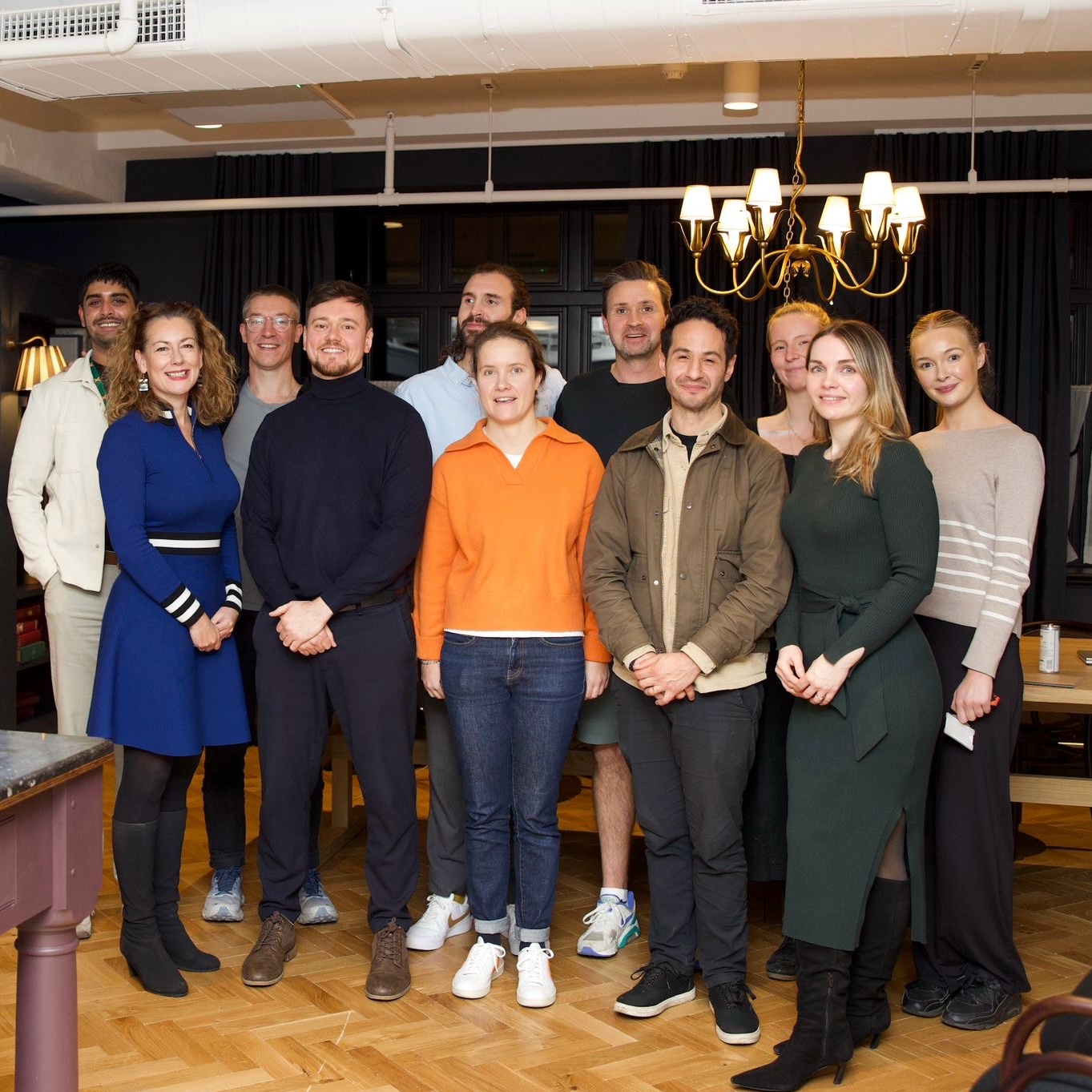Far from being an anagram for the end of life, DEI is just the beginning and it stands for Diversity, Equity and Inclusion. The case for embedding this into business culture is stronger than ever, with recent winners revealing what the intangible drivers are behind real progress.
Far from being an anagram for the end of life, DEI is just the beginning and it stands for Diversity, Equity and Inclusion. The case for embedding this into business culture is stronger than ever, with recent winners revealing what the intangible drivers are behind real progress.
{{divider}}

A more cohesive, tolerant, creative, diverse, accessible, respectful environment and culture may still be considered as within the realms of the uncommon sense; But a recent report by Mckinsey now has the data to demonstrate that the relationship between diversity on executive teams and the likelihood of financial outperformance has only strengthened over time. According to them, diversity winners are adopting systematic, business-led approaches to inclusion and diversity.
{{divider}}
This shift not only offers the workplace greater strengths, but also greater differences. As a result, Diversity, Equity and Inclusion has become increasingly important and crucial for the health, productivity and success of the organisation from a business and a human standpoint.
{{divider}}
DEI is a term used to describe programs and policies that encourage representation and participation of diverse groups of people. This includes not only people of different genders, races and ethnicities, abilities and disabilities, religions, cultures, ages, and sexual orientations, but also those with diverse backgrounds, experiences, skills and expertise. The goal is to not only hire a diverse workforce, but also to have systems and procedures that allow for all employees to be included in business happenings and have their voices heard.
{{divider}}
This is also more than just a socially responsible or “feel good” initiative. Studies show that DEI: drives employee productivity and performance, fosters creativity and innovation, grows a company’s talent pool, reduces employee turnover, and increases profits and grows a company’s market.
{{divider}}
Employers who create and invest in a culture of DEI are more productive, creative, innovative and financially successful. And, can attract great candidates. Millennials and Gen Z’ers are driving a richly diverse labor pool into business arenas, screens and virtual spaces. With the workspace shifting into more remote working, focusing on DEI is becoming increasingly important not only for workplace well-being, but also business well-being.
{{divider}}
Embracing this workforce change and taking the necessary steps to ensure they are attracting and retaining top talent from all sectors of the population helps the company succeed now and into the future. When creating an all-inclusive culture where all employees are encouraged and allowed to thrive, it’s important to consider four key factors.
{{divider}}
1) Modify The Process
{{divider}}
Biases can easily sneak into all aspects of daily operations, such as talent acquisition, team formation, ideas sharing, rewards and recognition and on and on. We're all subject to unconscious bias, no matter how experienced or well-intentioned we may be. However it is possible to reduce bias within a process. And if you de-bias your recruitment process, hiring for diversity shouldn't be a challenge.
{{divider}}
Asking simple yet powerful questions can make a real difference: how are diverse perspectives and needs acknowledged, recognised and represented? What is being done to create a safe environment for diverse perspectives to emerge? Are there any structural biases within the status quo?
{{divider}}
People are different and biases are different, but addressing them in a clear and open manner is the common ground that employees need to feel welcomed and heard. Ensuring that everyone has an awareness of how bias manifests in the workplace, and how to prevent unconscious bias from impacting daily business decisions, creates a work atmosphere that is open to accepting new diversity and inclusion initiatives.
{{divider}}
Recognise that successful Diversity and Inclusion Programs don’t just happen. They are planned, executed and managed with a goal to always push the boundaries and welcome new methods and trends of growth in the workspace. Organisations that invest in training and create processes that both embrace and value diverse workforces are better equipped to deal with and profit from an ever-changing workplace.
{{divider}}
2) Offer Resources and Encourage Debate
{{divider}}
Proactively research tools to help educate and enhance your team’s understanding of DEI. For example, you might share a resource on understanding why gender pronouns are important and how to use them appropriately. Webinars like this one on laying a foundation for diversity and inclusion as you scale are another great educational resource.
{{divider}}
Organisations can address diversity and inclusion through Structural Initiatives and by promoting Individual Skills. Structural Initiatives can include creating employee resource groups, instituting a diversity task force, and providing bias awareness training to all employees. Individual Skills include training employees to be up-standers and not bystanders, promoting mentor programs between colleagues with different backgrounds and different skill sets, and setting a culture that encourages employees to engage with each other and join a meeting they otherwise wouldn’t be a part of.
{{divider}}
Rather than leaning on compliance policies aimed at what not to do, managers can proactively build more equitable and inclusive practices into their team to drive positive change. By sharing resources and creating safe spaces for open dialogues, managers can help teams increase awareness, facilitate shared learning opportunities and co-create an inclusive environment of mutual respect.
{{divider}}
3) Set Expectations
{{divider}}
Beyond creating a space for open dialogue, it’s important to create clarity around standards and expectations. By doing so, you can help your team translate intention into action. One way to do this is by empowering your team to define a set of shared operating principles, calling out specific mindsets, behaviours and actions that align with these principles.
{{divider}}
Some powerful inquires to jumpstart the dialogue could include: what does a diverse and inclusive culture look like for us as a team? What might that diverse and inclusive culture look like mindset, behaviours actions in our day-to-day? What are the important guiding principles that can keep us aligned? Where are we doing well? What are our opportunities?
{{divider}}
People leaders have an opportunity to intentionally embed DEI into the organisation’s operations. For example, you might introduce a shared leadership model to run team meetings. This encourages the team to embrace and different leadership styles and equalise power dynamics and biases.
{{divider}}
4) Bring Out The Best In Your Team
{{divider}}
Research in Organisational Scholarship consistently demonstrates that sustainable change happens not in fighting or punishing the old, but in leveraging the existing good to guide transformation towards the new. By creating a diverse and inclusive environment, managers have a tremendous opportunity to bring out the best in their people and channel differences into unique assets for their team. By recognising the individuality of each employee and embracing differences, teams and organisations will not only support an environment of belonging but also achieve better outcomes.
{{divider}}
Hiring diversity at all levels, creating a diverse avenue for promotions, committing to DEI training among executives and team members, and learning from internal survey results to understand how everyone at your organisation views your culture, are all important for ensuring everyone is respected and treated equally. Effective DEI engagement has to be led from the top, with strong leaders creating the importance for an environment of inclusion and implementing it well and consistently.
{{divider}}
A company cannot simply have the diversity and equity measures in place, but must also have the inclusion to ensure they are making the biggest impact possible. Once all operate smoothly it leads to a sense of belonging for your employees and that is the key objective, to ensure everyone feels like they belong.
{{divider}}
DEI is not only something that should be promoted today, but should also be maintained, updated and managed throughout the future and as the business needs change and as employee needs change. Training, when done well, can make a great difference for employee success, work productivity, and happiness in the workplace, which all leads to a more profitable and strong business.
{{divider}}





.png)
.avif)


.avif)


.avif)
.avif)



